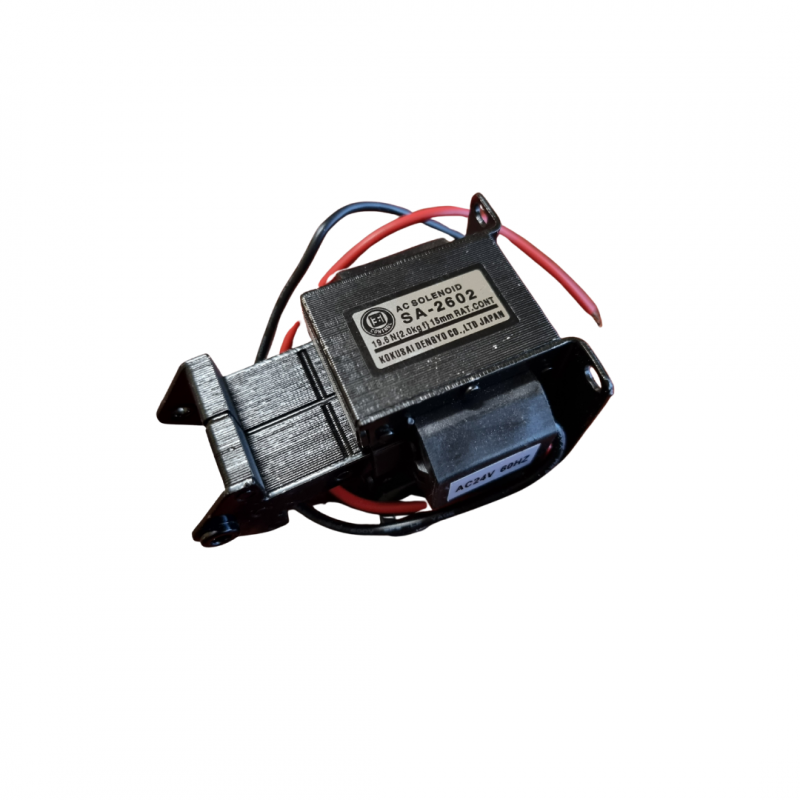Spare Parts
What Is A Solenoid? A Guide For Car Hoists
An Overview of Car Hoist Systems
Car hoist systems have become essential tools in modern automotive maintenance and storage facilities. These lifting systems provide mechanics with better access to the undercarriage of vehicles, streamlining maintenance and repair tasks.
Car hoists come in various configurations, including two-post and four-post designs, and are widely used in workshops and garages around the world. The heart of these hoists lies in their precise and controlled lifting mechanisms, in which solenoids play a crucial role.
Understanding Solenoids
Solenoids are electromechanical devices that convert electrical energy into mechanical motion. They consist of a coil of wire (usually copper) wound around a central core or plunger made of ferromagnetic material. When an electric current flows through the coil, it generates a magnetic field, causing the plunger to move linearly.
The simplicity and efficiency of solenoids make them versatile components in various applications, ranging from everyday household appliances to sophisticated industrial machinery. In car hoists, solenoids play a pivotal role in enabling precise and controlled movements during the lifting and lowering processes.
The Role of Solenoids in Car Hoist Systems
Car hoists are equipped with solenoids as essential components in their control systems. These solenoids act as electromagnetic switches, activating and deactivating hydraulic valves or other mechanisms responsible for lifting and lowering the hoist.
- Activating Hoist Mechanisms: When an operator initiates the lifting process, the control system sends an electrical signal to the solenoids. The energised solenoids open hydraulic valves, allowing pressurised fluid to flow into the lifting cylinders. This flow of hydraulic fluid raises the hoist’s arms, lifting the vehicle off the ground.
- Controlling Lifting Movements: Solenoids also provide precise control over the hoist’s movements. By controlling the activation and deactivation of hydraulic valves, the operator can stop the lifting process at any desired height. This level of control is crucial for working on different vehicle sizes and performing various maintenance tasks.
How Does A Solenoid Work?
The internal structure of a car hoist solenoid consists of a coil of wire wrapped around a plunger, which is often guided within a tube or sleeve. When an electrical current is passed through the coil, it generates a magnetic field. The magnetic field attracts the plunger, causing it to move towards the center of the coil.
In car hoists, this linear motion is harnessed to actuate hydraulic valves or other mechanical components. When the solenoid is energised, the plunger extends, opening the hydraulic valve and allowing the flow of hydraulic fluid. Conversely, when the solenoid is de-energised, the plunger retracts, closing the valve and stopping the flow of fluid.
Controlling Hoist Operations
The ability to precisely control the hoist’s operations is critical for safe and efficient lifting and lowering of vehicles. By activating and deactivating the solenoids, operators can control the movement of hydraulic fluid and, consequently, the hoist’s arms. This precise control ensures smooth and accurate positioning of the vehicle at the desired height.
Safety Measures and Limitations
Car hoist manufacturers prioritise safety, and solenoids play a role in implementing safety features. Some common safety measures include:
- Emergency Stop Functions: Car hoists are equipped with emergency stop buttons that instantly de-energise the solenoids and halt all hoist operations in case of an emergency.
- Overload Protection: Some hoists have overload protection systems that automatically stop the lifting process if the hoist’s weight capacity is exceeded. Solenoids play a role in controlling these safety features.
It’s important to note that while solenoids offer precise control and safety enhancements, they do have limitations. Solenoids are typically suitable for applications with relatively low load capacities and moderate speed requirements. In high-capacity car hoists, other mechanisms or hydraulic systems may be used in conjunction with solenoids to achieve the desired lifting capabilities.
Advancements and Innovations
Advancements in solenoid technology have led to improvements in car hoist systems. Manufacturers continue to explore ways to enhance efficiency, reliability, and safety in hoist operations.
- Improved Efficiency: Modern solenoids are designed for higher energy efficiency, reducing power consumption and operational costs.
- Enhanced Control Systems: Advances in control systems have allowed for more sophisticated programming and automation, enabling precise and repeatable hoist movements.
- Integration with Automation: Solenoids are integrated into automation systems, allowing for remote operation and increased productivity in automotive workshops.
Maintenance and Troubleshooting
To ensure optimal performance of car hoist solenoids and the entire lifting system, regular maintenance is essential. Here are some maintenance tips:
- Visual Inspection: Regularly inspect the solenoids for any signs of wear, damage, or loose connections.
- Lubrication: Follow the manufacturer’s guidelines for lubricating the solenoids to maintain smooth motion.
- Electrical Testing: Conduct periodic electrical tests to check the solenoids’ coil resistance and ensure they are functioning within the specified parameters.
Troubleshooting:
- If the hoist experiences erratic movements or fails to lift or lower smoothly, it could indicate a faulty solenoid or electrical issue. Professional technicians should be consulted to diagnose and rectify the problem.
- Any unexpected noises, such as buzzing or humming, may indicate a solenoid not engaging or disengaging correctly.
Conclusion: What Is A Solenoid?
Car hoist solenoids are essential components in the control systems of car hoists, allowing for precise and controlled lifting and lowering of vehicles. Understanding the role of solenoids and how they work provides a deeper appreciation for the technology behind these remarkable tools. As the technology in solenoids advances, it will continue to shape the future of automotive maintenance and enable safer and more efficient operations across workshops.
Shop AAQ’s comprehensive range of Two Post Hoists, Four Post Hoists, Hoist Pads & Components, and more online, or get in touch with our friendly team and let us help you take your automotive workshop to new heights.
Note: The specifications and features of car hoist systems may vary depending on the manufacturer and model. Always refer to the manufacturer’s guidelines and recommendations for your specific car hoist.

